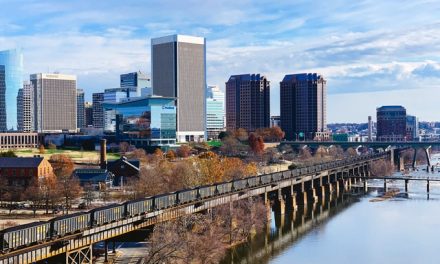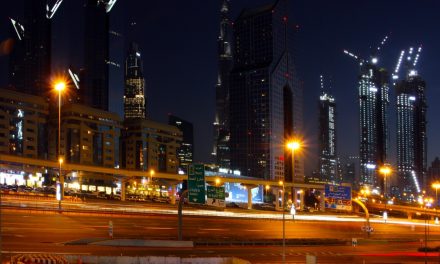Fans of historic architecture visiting Seville will find themselves in what can only be called seventh heaven. There are almost as many historic buildings in Seville as there are oranges on the trees in the countryside surrounding this Andalusian city in southwest Spain.
There are, in fact, so many historic buildings in Seville you could easily spend a month checking them all out. If you haven’t got 30 days to devote to continuous sightseeing of palaces, cathedrals, and watchtowers then you’ll have to make some difficult decisions about which to leave out.
Knowing exactly which are the unmissable historic buildings in Seville and where they are before you go will not only save you time traipsing around the streets when you get there, it’ll ensure you won’t be left worrying you’ve missed out on seeing the best of the bunch. And, to avoid navigating the busy city streets with all your luggage, head to a Bounce bag storage before you set out.
Which Are The Unmissable Historic Buildings In Seville?
Royal Alcazar of Seville
The Royal Alcazar of Seville is one historic building everyone should see when they go to Seville. Located next to the Cathedral of Seville in the city center, the alcazar is an outstanding structure in many ways.
The palace was built for a 14th-century king, Peter of Castile, on the site of an earlier Muslim fortress. It’s a superbly maintained example of three different styles of architecture: Gothic, Romanesque, and Renaissance, and one of the best examples of Mudejar art in Spain.
Some of the alcazar’s most magnificent features are the Lions Gate, the Doncellas Patio with its sunken gardens and pool, and the Ambassador’s Hall. If you’re a Game of Thrones fan, you may have the sensation you’ve seen the alcazar before, and you’d be right. It was used as a filming set in the fifth season.

Cathedral of Seville
While it may not have the same uniqueness as the Sagrada Familia in Barcelona, the Cathedral of Seville is certainly a monumental historic building.
Construction of the immense Gothic cathedral began sometime around the beginning of the 15th century and took over a hundred years to complete. Later additions to the massive structure display Renaissance, Baroque, and Neoclassical architectural styles.
Two of the cathedral’s most interesting features are the star vault and the main sacristy dome. Also of architectural interest is the cathedral’s bell tower, Giralda, which is topped with a bronze weathervane.
Both the cathedral and the neighboring Royal Alcazar of Seville are UNESCO World Heritage sites.

Torre del Oro
There are many examples of watchtowers along the Spanish coast, but the Torre del Oro in the inland city of Seville is much more fascinating.
The Torre del Oro, or Tower of Gold in English, stands out from other watchtowers because of its shape. The twelve-sided tower was constructed around the beginning of the 13th century but remains in such prime condition that it could have been built yesterday.
Over the centuries, the tower has served as a lookout point for invading forces navigating the Guadalquivir River and as a prison.
If you’re really into watchtowers, then you’ll also want to see the eight-sided Tower of Silver which is just a few minutes away from the Tower of Gold.
Hotel Alfonso XIII
Not only can you take a look at the historic building in Seville that’s the Hotel Alfonso XIII, but you can also stay in it too. If you have enough money, that is, as it definitely falls into the luxurious price range.
The Hotel Alfonso XIII is a grandiose, early 20th-century building that could easily be mistaken for a royal palace inside and out. Its exterior is pure Andalusian, and its interior is an elaborate extravaganza of Mudejar art. The foyer, internal patio, and royal hall are truly jaw-dropping.
The Hotel Alfonso XIII is a hotel that’s favored by the elite of society, including royalty, pop stars, and A-list actors. Take photographs of this hotel, and you never know who might suddenly appear framed in the shot.

San Telmo Palace
The Palacio de San Telmo in Seville is a stunning 17th-century Baroque structure that has been used as both a university and a governmental building.
If you enjoy rectangular-based architecture, you’ll love this historic building as that’s basically what it is with towers on each corner and square internal patios.
The most impressive feature of this historic building in Seville is its white facade, while the rest of the building is ochre-colored. The facade is also adorned with interesting decorative scenes depicting the gods of the sea, which relates back to the time when the students there were studying navigation.
Italica Amphitheater
To see some really ancient architecture in Seville, you need to visit the Italica Amphitheater in Santiponce on the outskirts of the city.
The Italica Amphitheater dates back to the 2nd century, and the same as most surviving monuments of that age, it was built by the Romans.
The amphitheater is a well-preserved example of Roman construction and, in its heyday, would have had the capacity to seat a crowd of around 25,000. Although they are no longer accessible, there would once have been subterranean holding cells for the gladiators who went up into the main pit to fight either against each other or against wild animals.
La Casa Fabiola
Externally there’s nothing much that garners great attention about the Casa Fabiola, but it’s still a must-see in Seville.
La Casa Fabiola, while it doesn’t appear to, dates back to the 14th century, so it is a good example of minimalist architecture. Not designed to draw attention to it, this building has been used as a convent and writer’s hideaway and now houses an art gallery with more than a dozen exhibition halls.
The main beauty of La Casa Fabiola isn’t external, but step inside, and you’ll enter into a house that could easily be classed as a secret palace. It contains a patio with fountains and a ballroom which is not something you’ll find in every house in Seville.




